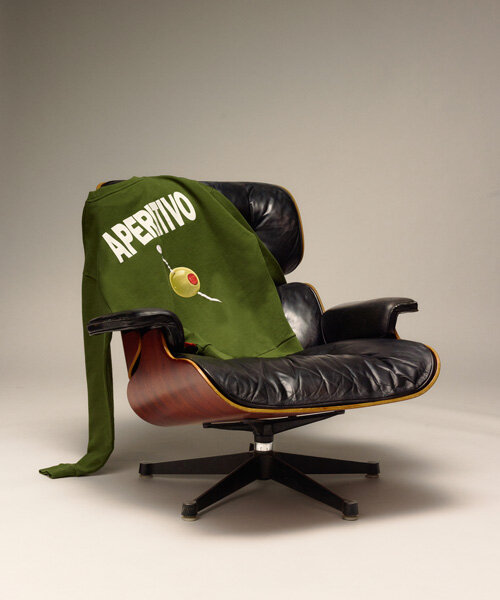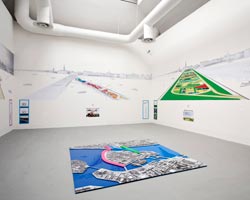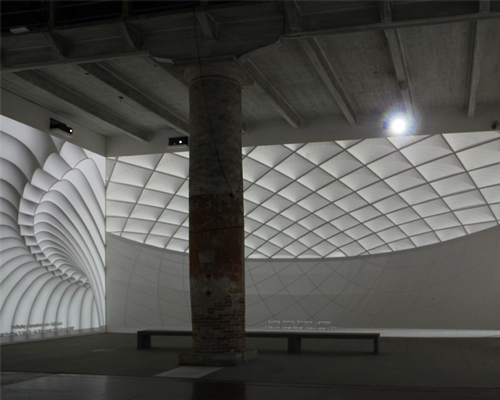shopkeeper, nakornkasem, bangkok public works, urban projects bureau and owen pritchard all images courtesy of venice takeaway
the british pavilion ‘venice takeaway‘ will soon be presented at the 13th international architecture biennale in venice. organized by the british council, the upcoming exhibition is curated by vicky richardson, the commissioner of the british pavilion as well as director of architecture, design, fashion for the british council and vanessa norwood, head of exhibitions at the architectural association. taking cues from international locations, the display will feature a collection of architectural ideas which may be introduced in the UK. we asked vicky richardson a few questions about the participants and upcoming exhibition.
 waiting for the sonic boom at CLUI’s desert research station smout allen and BLDG BLOG
waiting for the sonic boom at CLUI’s desert research station smout allen and BLDG BLOG
DB: what will be the theme of the british pavilion at this year’s venice architecture biennale?
VR: ‘the british pavilion presents the work of ten architectural teams who travelled the world in search of imaginative responses to universal issues. ‘venice takeaway: ideas to change british architecture’ charts their course in argentina, brazil, china, germany, japan, the netherlands, nigeria, thailand and the USA, demonstrating the creative potential of sharing ideas across borders.
the exhibition examines themes that are of significance in both the UK and other parts of the world. by shedding light on alternative modes of practice, the participants demonstrate the common ground of architects internationally. themes include the design of schools, provision of housing, urban development, planning, risk consciousness, and the competition system. one issue considered by several participants is the role of the architect and the profession’s relationship to the public.’
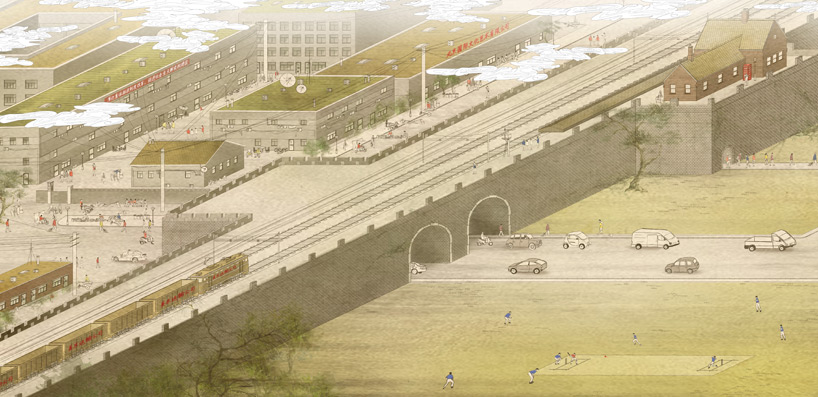 excerpt from ‘along the high street in the working village’ darryl chen
excerpt from ‘along the high street in the working village’ darryl chen
2. who are the architects and artists involved and why have they been chosen to represent the pavilion’s theme?
‘the exhibition involves more than 26 practising architects, curators, academics, filmmakers and writers, who were selected by an advisory panel following an open call for imaginative ideas. applicants were asked to consider new ways to respond to the challenges of the relationships, policies and structures that surround architecture in a globally connected world. the chosen groups are:
aberrant architecture, who travelled to rio de janeiro to investigate CIEPs, a radical education programme and a series of prefabricated primary schools designed by oscar niemeyer.
smout allen and BLDGBLOG, whose research focused on the center for land use interpretation in los angeles, an institution dedicated to the diffusion of knowledge about land use.
ross anderson and anna gibb, who went to moscow to investigate ‘paper architects’, a loose collective formed in the 1980s in response to state restrictions on their ability to build.
darryl chen, who looked at parallels between the UK and china via a study of a pocket of informality, caochangdi, a village on beijing’s fifth road.
dRMM who studied ijburg, a floating community that has thrived under an advanced culture of planning, procurement and design, to the east of amsterdam in the netherlands.
forum for alternative belfast who went to berlin to investigate the international bauausstellung 1987 (IBA 1987), an ambitious and visionary urban renewal project involving international architects.
public works, urban projects bureau and owen pritchard who formed a team to develop an ongoing discussion on the role and image of the architect through a new open charter.
elias redstone who investigated fideicomiso in argentina, a legal trust which enables architects to fund their own projects.
liam ross and tolulope onabolu, who travelled to lagos to embark on a comparative study of risk and regulation and their impact on design.
takero shimazaki /toh shimazaki architecture whose investigation focuses on the work of itsuko hasegawa in several locations around japan, and explores the way her architecture combines a belief in people with abstraction.
the ideas of the ten architectural teams will be showcased in the british pavilion in a specially designed environment created by graphic and environmental brand designers, born design.’
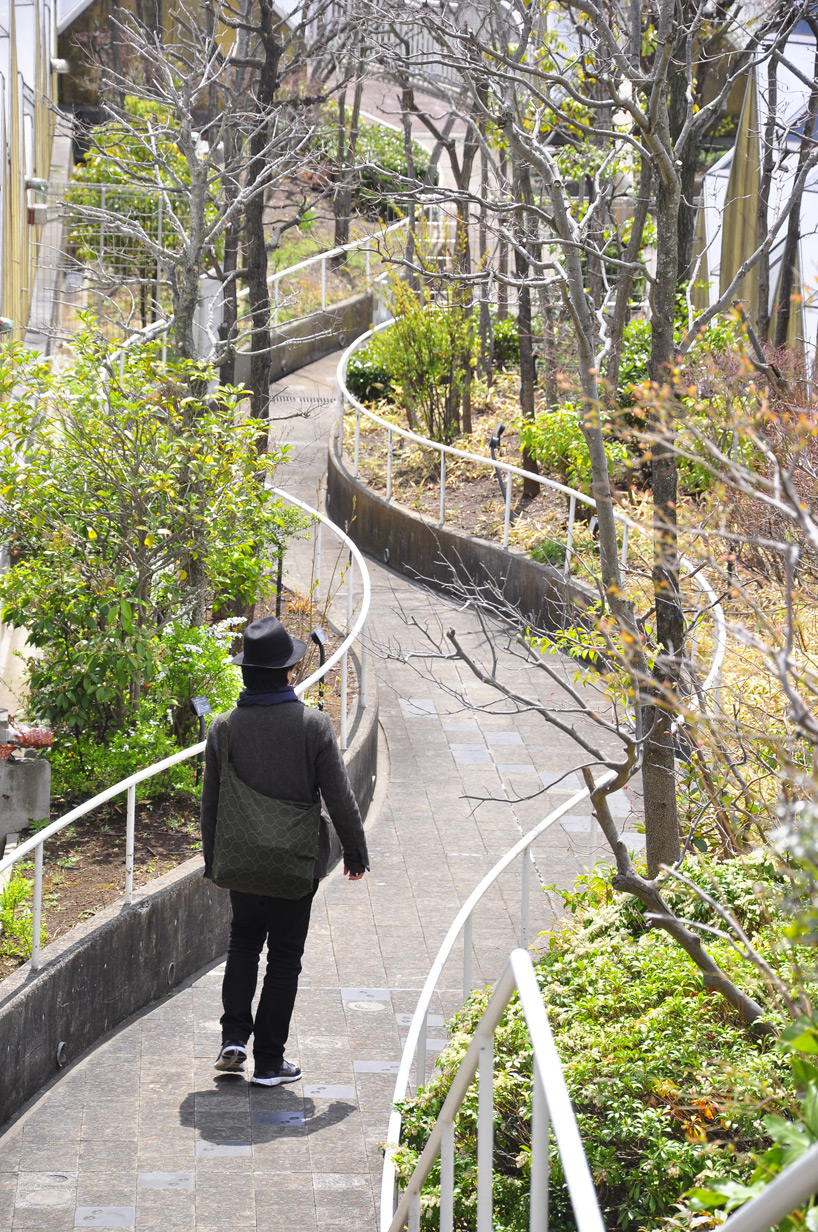
3. how will the content and physical realization of the pavilion support the overarching theme selected by david chipperfield, ‘common ground’?
‘venice takeaway responds to biennale director david chipperfield’s theme of common ground by identifying imaginative and ambitious ways to negotiate the challenges of making architecture. the process of working on this exhibition has reinforced our belief in the importance of mobility across borders, openness to new ideas and an international approach to shared problems.
the content takes direct inspiration from research trips in ten countries across the world: argentina, brazil, china, germany, japan, netherlands, nigeria, russia, thailand and the USA. it presents two distinct atmospheres: an ‘emporium of ideas’ where the participants’ research archives are displayed; and a set of polemical proposals for the UK in the form of installations and objects. .
our hope is that the proposals will influence debate in the UK, provide an injection of fresh ideas and open up international dialogue. the research archives will be published online and in an accompanying catalogue, forming a resource that others can draw on in the future.‘
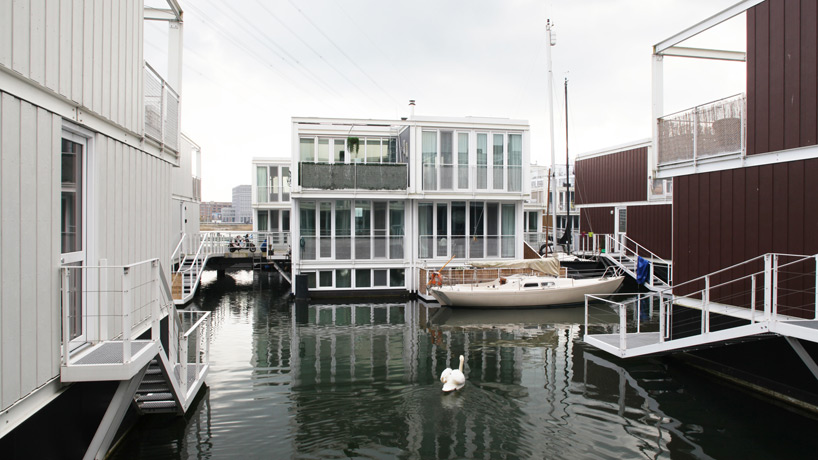 swan swimming amongst waterhouses – ijburg waterbuurt west, amsterdam dRMM
swan swimming amongst waterhouses – ijburg waterbuurt west, amsterdam dRMM
the 13th international architecture biennale is curated by london-based architect david chipperfield. the theme of the event is entitled ‘common ground’ and will run from 29th of august through 25th november 2012, in venice, italy.

